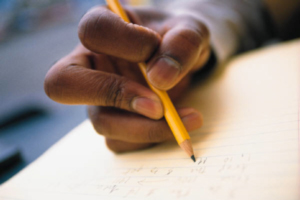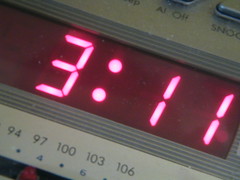Category — 1.0 Kindergarten 6-12: Academic Skills
Academic Skills
The development of academic skills (see full Glossary) is very closely related and intertwined with the development of cognitive, language, motor and social/emotional skills. It is very important that you monitor your child’s development, in order to make sure he or she has the developmental skills that are necessary and crucial to the development of academic skills. For example, your child will not be able to learn how to read, if he or she does not understand that words and letters are symbols that represent something. Similarly, if your child’s fine motor skills are not well-developed, it may be difficult for him or her to hold a pencil properly, and therefore learn how to write.
READING
Children at this age are slowly and gradually developing their reading skills. Most of them:
- know that letters and words or “those funny shapes on the pages of books” actually mean something;
- can recognize familiar signs and symbols in the neighbourhood (for example, a road sign with adult and child means people crossing, slow down, and in many towns and cities, golden arches means McDonald’s, a cross on top of a building means it is a church);
- can hold a book, right side up, and turn the pages, from beginning to end;
- can associate sounds with letters;
- can recognize his or her name in print;
- can recognize some common sight words, such as “enter” and “exit;”
- can name most letters of the alphabet;
- can segment a word: “cowboy” is the words “cow” and “boy” put together;
- can blend sounds to make a word: “cow” and “boy” make “cowboy;”
- can find words that rhyme with each other: “toy” rhymes with “boy;”
- can identify the first sound in a word: “b” is the first sound in “boy;”
- can identify the last sound in a word: soft “y” is the last sound in “boy;”
- knows that letters make words and that words are made of letters.
WRITING
Children at this age are slowly and gradually developing their writing skills. Most of them:
- are generally quite interested in writing, and often pretend to write or scribble (see full Glossary);
- draw lots of pictures of real and imaginary objects;
- hold pens and pencils correctly (that is, using the tripod position (Fig. 1);
- use the correct orientation when writing or pretending to write (that is, writes or pretends to write, from left to right);
- write his or her first name and sometimes last name;
Figure 1: Tripod position
MATHEMATICS (MATH)
Children at this age are slowly and gradually developing their mathematical skills. Most of them:
- can count to ten or more;
- can count from ten to zero (that is, can count backwards, which is an important math skill);
- can identify the numbers 1 to 5;
- recognize a pattern and continue it (e.g. red blue red blue, or following dance steps);
- understand one to one correspondence, this means that when counting, we count each object once, and only once;
- use math terms, such as “less than” and “more;”
- can identify most common shapes, like triangles and circles;
- are starting to tell the difference between the value of different coins; for example, you need four quarters for every loonie
- are starting to understand that some objects are “long”, others are “longer” and others are the “longest;”
- can tell time, with a digital clock (Fig.2).
Figure 2: Digital clock
Did you know?
- A child’s view of him or herself will greatly influence if and how fast he or she can learn something. For example, your child’s social and emotional skills are closely related to his or her ability to learn how to read and write.
- Although children at this age know a lot of quantitative concepts, they may still struggle with the concept of “zero.” It is very important to keep that in mind, when introducing mathematical concepts to children this age.
- Reading to your child will greatly influence how he or she will approach learning to read in the future! Children who are read to enjoy the process of reading more and develop many pre-reading skills, such as associating sounds with letters, much earlier than children who are not read to.
- Some kindergartners are starting to use rules of grammar when writing. Some will put a period at the end of a sentence and others will start a sentence with a capital letter. A good number of kindergarteners will also spell their names with a capital letter.
see References
December 6, 2011 No Comments

